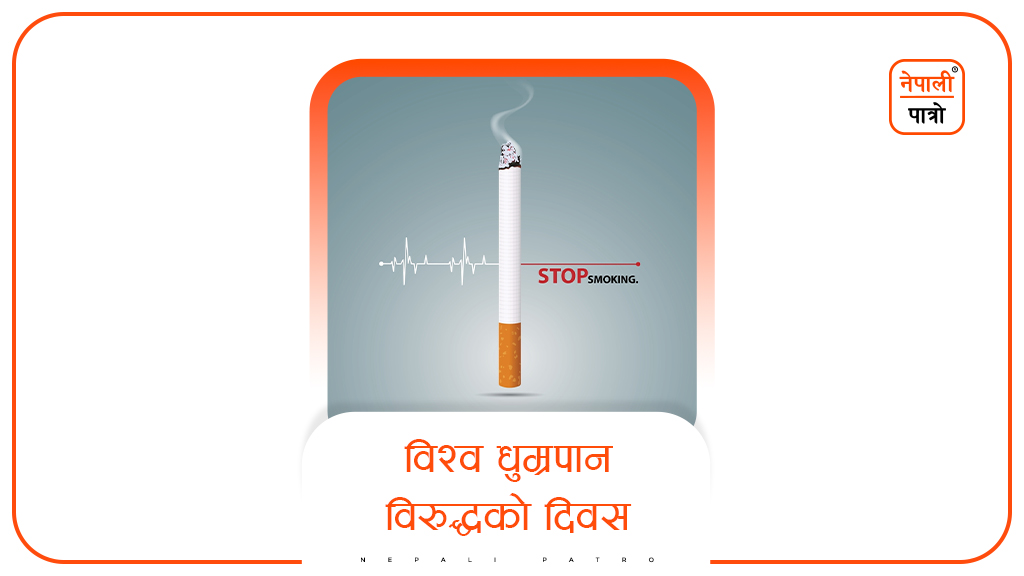
World No Smoking Day
World No Tobacco Day or World No Smoking Day is celebrated and observed around the world on May 31 every year. On this day the public is exposed to the dangers of tobacco products such as cigarettes, tobacco, and tobacco-related products. The commercial practices of tobacco companies, along with the diffusion of information as to what WHO is doing to fight various tobacco-related diseases and what people around the world can do to protect their health and well-being, etc through various of its publications. It provides information on various information such as what the WHO is doing to combat the tobacco epidemic, and what people around the world can do to protect their health, the right to a healthy life and healthy lifestyles of the future generations.
The World Health Organization (WHO) member states established World No Smoking Day in 1987 to draw global attention to the tobacco epidemic and its preventable deaths and diseases. The day was set up with the aim of spreading awareness against tobacco and its negative health effects.
According to the World Health Organization, tobacco use kills more than 1.5 to 2 million people worldwide each year, and non-smokers are even more affected by secondhand smoke. Thus, World No Tobacco Day was established in 1988 by the member nations of the World Health Organization (WHO). Over the past few years, the day has been enthusiastically received around the world by the Government of Nepal, public health organizations, smokers around the world, and some voices of resistance have also been raised by tobacco growers and the tobacco industry.
World No-Tobacco Day/ World No Smoking Day
Tobacco has been used for a long time in the early United States, mainly in the South, where tobacco was used extensively by herdsmen also known as cowboys. Spain’s arrival into the international scenario introduced tobacco to other nearby European countries, and it became an attractive, and heavily traded plus lucrative commodity in support of the popular smoking habit.
After the Industrial Revolution of 1760-1820, cigarettes became very popular worldwide especially in the EU. However, in the middle of the 20th century, there were various medical researches that revealed the serious and negative health effects of tobacco and tobacco use on human organs including lungs, throat and tongue which study when published leads to a sharp decline in tobacco use.
In 1987, the World Health Assembly of the World Health Organization (WHO) designated the WHO’s annual celebration, April 1, 1988, as World No-Tobacco Day. The purpose of World No-Tobacco Day was to encourage all smokers worldwide to quit smoking for at least 24 hours. Extensive press coverage of the event was inspired and identified policies were made along with health education activities related to the program, with the special theme “Tobacco or Health: Choose Health.” Activities featured in WHO-selected countries were included, various countries perform programs as: smoking cessation in public places by Ethiopia, suspension of government tobacco sales by Cuba, government ban on radio and printed tobacco message broadcasting in Lebanon, poster competition in Spain, public cigarette burning ceremony by Nepal, and large public information campaigns by China. It has been seen that all these various activities have been really informative and in the following days a lot of public awareness has been developed about the harms of tobacco.
The Second World No-Smoking Day, held on May 31, 1989, focused on “Women and Tobacco – Women Smokers: Added Risks.” with added emphasis on the harm of using tobacco and its related products. In preparation for the event, the WHO Director-General requested all major UN agencies to assist his office in declaring World No-Smoking Day and it distributed worldwide press kits, videotapes, and radio programs. Following the event, the WHO’s Tobacco or Health Program documented World No Smoking Day-related activities and received newspaper coverage from more than 300 countries around the world. In some countries these ceremonies were led by the President in Bangladesh, former Prime Minister of Sudan, or Health Ministers Nigeria, Fiji, Oman, and many others.
On World No Smoking Day, the United States focuses on tobacco use worldwide through events such as the Great American Smokeout day. On May 1, 1990, the WHO celebrated the Third World No-Smoking Day with the theme of the event being “Childhood and Youth Without Tobacco”.
Thus, every year on May 1, as in other countries, the World No Smoking Day is observed in Nepal by the Government of Nepal, public health organizations, local and central level with various public awareness programs such as decreasing of smoking tobacco and tobacco related products to prevent dangerous diseases such as cancer. The government has brought a law banning smoking in public places in Nepal about 10 years ago, but it would be meaningful to celebrate World No-Smoking Day if the entire public is aware of it, and awareness to those who even know the law are not obeying them due to the lack of its implementations. Then only the celebration of World No Smoking Day would be of true meaning by completely eradicating non law abiding acts and such mentality.
